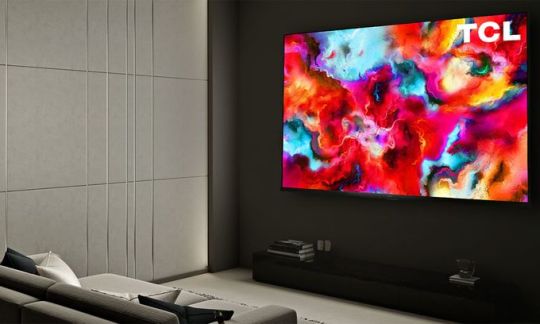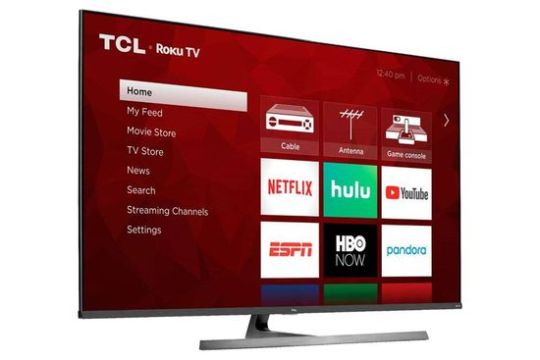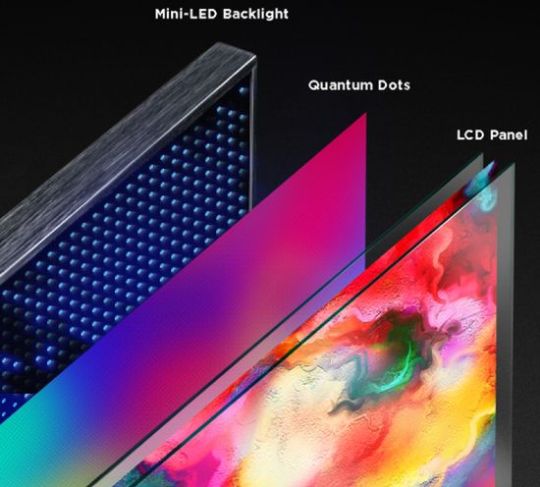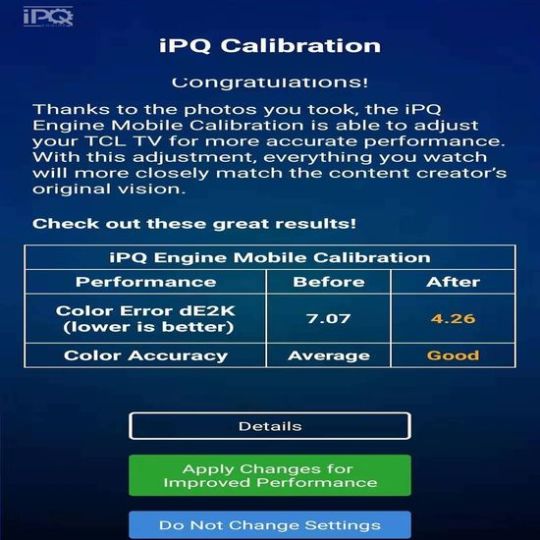#QuantumContrasttechnology
Explore tagged Tumblr posts
Text
TCL 8-Series Roku TV Review

Of course, TCL Roku TVs have become the sensation of recent years in the middle segment of TVs. Several years in a row, many TCL models, including the phenomenally successful 6th series, are included in various top lists and are Best Sellers on the main trading floors. Moreover, their huge popularity is based not only on relatively low prices, but also on a huge number of enthusiastic consumer reviews. As a result, many experts are closely following the news from this Chinese company. Therefore, the presentation of the TCL TVs 8-Series at CES 2019 did not go unnoticed.

Unfortunately, today pre-order is only available at Best Buy. The 65-inch 65Q825 costs $ 2,000, and the 75-inch 75Q825 costs $ 3,000. In addition, the 8-series uses Roku TV, which rightfully claims to be the leader in popularity among built-in smart TV systems.

Many experts believe that Roku has largely ensured TCL's immense popularity in the United States. According to market research firm NPD, it grew by more than 60% in 2017 and 2018, trailing only Samsung and Vizio in units sold. Finally, TCL promises to expand the 8th series with a 8K model in early 2020.
Mini-LED backlight technology
But of course, the innovative mini-LED backlight technology has become the main advantage of the new series.

For the first time, these models use mini-LED technology, which many experts consider to be a real competitor to OLED technology. TCL its calls "Quantum Contrast." As known, the number of dimming zones directly affects image quality. In particular, their increase reduces the blooming effect, which is present in all LCD models with local dimming. It occurs due to insufficient accuracy of backlighting. Of course, expensive modern LCD models provide a fairly high quality, but even they cannot completely eliminate the "blooming". Mini-LED technology offers excellent prospects for solving this problem. Usually, modern models use LEDs about 1000 microns (0.04 inches) in size. But today companies produce mini-LEDs measuring about 200 microns (0.02 inches). Also, the improvement of mini-LED production technology has significantly improved their specs, including size, power consumption, brightness, heat dissipation, etc. This has allowed engineers to use a significantly larger number of mini-LEDs due to a decrease in their size. As a result, TCL developed Mini-LED backlight technology for their TVs. Today company places over 25,000 mini-LEDs the back of the TV, which are grouped into around 1,000 zones. In comparison, the 75-inch Vizio Quantum X uses only 485 local dimming zones, and the Sony XBR-85Z9G 8K TV costing about $ 13,000 has 720 zones.
iPQ Calibration
In addition, the company announced an additional service with new iPQ Calibration app. According to the company, it will adjust the image settings. In fact, this option provides simplified calibration of the TV without specialized equipment. This function only requires an app to TV connection and a series of photo screens with gray and color test patterns. Next, the TV will automatically make all the necessary settings.

Unfortunately, the app will only work with some phones, including Google Pixels and iPhone, due to phone camera restrictions. The company promises that all TLC TVs 2019 and, possibly, earlier models will support this option.
Conclusion
Of course, TCL 8-series claims to repeat the success of 6-series due to the innovative Mini-LED backlight technology, Roku TV, iPQ Calibration and 8K resolution, which the company promises in the models of this series in 2020. However, this factor directly depends on the pricing strategy of the company. The huge popularity of the previous TCL series was largely due to their excellent price, which effectively complemented a fairly high quality. This video offers an overview of the TCL 8-series. Read the full article
#iPQCalibration#Mini-LEDbacklighttechnology#QuantumContrasttechnology#TCL65Q825RokuTV#TCL75Q825RokuTV#TCL8-seriesRokuTVs
0 notes
Text
What is Mini-LED backlight technology?

For several decades now, fierce competition and digital technologies stimulate innovative boom in the consumer electronics segment. First of all, it manifests itself in the segment of high-tech devices, including projectors, TVs, robotic vacuum cleaners, etc. For example, the list of innovative technologies developed in recent years for TVs includes HDR technology, HDMI 2.1 standard, 10 and 12-bit color depth, HFR (high frame rate) format, Micro LED, etc. Mini-LED Backlight technology has taken a worthy place in this list. As known, it was developed and first introduced by the Chinese TCL company at CES 2019.

Backlight TV
As known, all modern LCD TVs use LEDs for backlighting. But OLED (organic light-emitting diode) TVs use their own radiation of organic diodes and do not require backlighting. As a consequence, they provide absolutely black and, accordingly, endless contrast, which characterizes the white / black ratio. As known, LEDs emit light when exposed to electricity and are widely used in consumer electronics. Companies usually placed LEDs on the edges (Edge-LED backlight) or behind the screen (Direct-LED backlight). Each LED backlight type has its pros and cons. But modern TVs are increasingly using FALD (full-array local dimming), which is an improved version of Direct-LED backlight.

The rapid spread of this technology was due to the growing popularity of HDR (high dynamic range) technology. In this case, TV dims the LEDs behind dark sections of the image, increasing contrast between the bright and dark areas of the image. Of course, reducing the brightness of each pixel also increases the visualization of contrast. However, this task is technically very difficult for the LCD. As known, LED TV creates an image by blocking the backlight. But the LCD-matrix only partially blocks light, creating a grayer image with fewer black gradations compared to, for example, an OLED matrix. To solve this problem, engineers developed Local dimming technology, which adjusts the backlight in areas of the screen depending on the frame content.

In fact, the further development of this technology has become the basis for FALD. Today, backlight technology is one of the main specs of TV, significantly affecting image quality. Therefore, modern models use several types of backlighting, depending on the class.

Mini-LED backlight technology
Of course, each of the 8 million pixels in a 4K TV cannot have its own LED for backlighting. Actually, each group of LEDs (they are called dimming zones) illuminates tens and even hundreds of thousands of pixels. For example, their average number varies about 100 for ordinary models, and reaches several hundred for top models. Unfortunately, sizes, energy drain, heat generated and cost limits the increase in their quantity. Usually their sizes vary in the range of about 1000 microns (0.04 inches), but today companies produce mini-LEDs measuring about 200 microns (0.02 inches). Unfortunately, they have less brightness compared to conventional LEDs due to the reduction of material to create the light. Of course, an increase in voltage and current increases their brightness, but this drastically reduces their longevity. But the improvement of mini LED production technology has allowed engineers to expand these boundaries by increasing their efficiency. As a result, TCL's engineers developed "Quantum Contrast" mini-LED backlight technology based on them. Of course, mini LEDs are more expensive, but their pros compensate for this aspect.

Due to the reduced size of the LEDs, the company was able to place over 25,000 mini-LEDs the back of the TV, which are grouped into around 1,000 dimming zones. In comparison, the 75-inch Vizio Quantum X uses only 485 local dimming zones, and the Sony XBR-85Z9G 8K TV costing about $ 13,000 has 720 zones. As a result, more accurate dimming of screen areas significantly increases the overall contrast ratio due to the reduction in the diffuse lighting of dark objects. Moreover, the company can increase the brightness of LEDs without fear of artifacts, providing improved contrast in various scenes.
Conclusion
Of course, this technology cannot compete with OLED or MicroLED, which control every pixel. But, this technology drastically improves the contrast of LED TVs, and may well claim an alternative to OLED technology. Today, TCL offers 8-series Roku TVs, including the 65-inch TCL 65Q825 and 75-inch TCL 75Q825 with this technology. This video offers the announcement of the 8-series TCL TVs with Mini-LED backlight technology. Read the full article
#Direct-LEDbacklight#Edge-LEDbacklight#FALD#full-arraylocaldimming#LocalDimmingtechnology#MiniLEDs#Mini-LEDbacklighttechnology#QuantumContrasttechnology#SonyXBR-85Z9G8KTV#TCL65Q825RokuTV#TCL75Q825RokuTV#TCL8-seriesRokuTVs#VizioQuantumX
0 notes